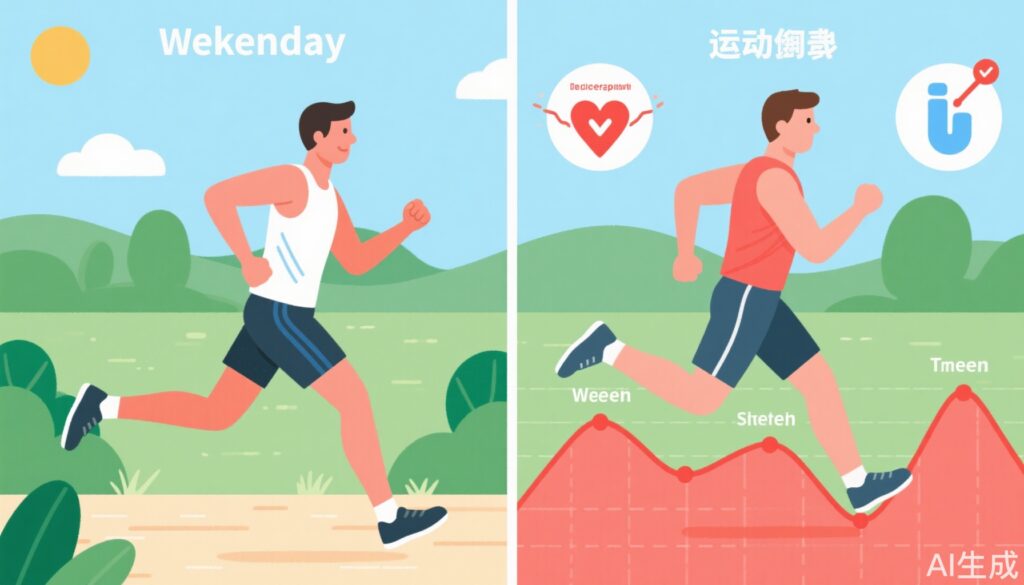Highlight
- Both ‘weekend warrior’ and regularly distributed physical activity patterns meeting current recommendations are associated with significant reductions in all-cause and cardiovascular mortality among adults with diabetes and MASLD.
- In both diabetes and metabolic dysfunction-associated steatotic liver disease (MASLD), a minimum of 150 minutes per week of moderate-to-vigorous physical activity (MVPA) confers substantial benefits, regardless of distribution across the week.
- Weekend warrior activity patterns also reduce the odds of high atherosclerotic cardiovascular disease (ASCVD) risk and MASLD prevalence, offering flexibility for individuals unable to exercise daily.
- Self-reported versus accelerometer-based physical activity assessment and observational study design are key limitations, with implications for future research.
Background
Physical inactivity is a major modifiable risk factor for morbidity and mortality in chronic cardiometabolic diseases, including type 2 diabetes mellitus and metabolic dysfunction-associated steatotic liver disease (MASLD, formerly NAFLD). Clinical guidelines advocate for at least 150 minutes per week of moderate-to-vigorous physical activity (MVPA) for these populations. However, whether health benefits depend on the frequency and distribution of activity, as opposed to total weekly duration, remains unclear—particularly for individuals who concentrate exercise into 1–2 days per week, commonly termed ‘weekend warriors.’ Understanding this question is crucial for designing practical, patient-centered activity recommendations.
Study Overview and Methodological Design
Two recent prospective cohort studies provide robust evidence on this topic:
1. Wu et al. (Ann Intern Med. 2025) analyzed 51,650 US adults with self-reported diabetes from the National Health Interview Survey (1997–2018), followed via National Death Index linkage through 2019. Participants were categorized as: inactive (no MVPA), insufficiently active (150 min MVPA per week, with ≥50% in 1–2 days; the active group performed >150 min MVPA not meeting this criterion; and the inactive group performed ≤150 min/week.
Both studies adjusted for sociodemographic and clinical covariates.
Key Findings
Diabetes Cohort (Wu et al.):
– Over a median 9.5-year follow-up, 16,345 deaths occurred (5,620 cardiovascular; 2,883 cancer).
– Compared to inactivity, all-cause mortality hazard ratios (HR) were: insufficiently active 0.90 (95% CI 0.85–0.95), weekend warrior 0.79 (0.69–0.91), and regularly active 0.83 (0.78–0.87).
– Cardiovascular mortality benefit was most pronounced in the weekend warrior group (HR 0.67, 0.52–0.86), followed by regularly active (HR 0.81, 0.74–0.88); benefits for cancer mortality were less marked.
MASLD Cohort (Zelber-Sagi et al.):
– Both weekend warrior (OR 0.36, 0.24–0.53) and active (OR 0.47, 0.36–0.62) patterns were associated with lower MASLD odds vs inactive.
– Among 859 MASLD participants, during a median 14.3 years’ follow-up, all-cause mortality HRs were 0.35 (0.13–0.94) for weekend warriors and 0.48 (0.24–0.98) for actives.
– ASCVD risk was significantly reduced in both physically active groups (WW OR 0.27, 0.09–0.75; active OR 0.39, 0.20–0.78).
Mechanistic Insights and Pathophysiological Context
Regular physical activity improves glycemic control, insulin sensitivity, lipid profiles, and systemic inflammation—all key drivers of diabetes and MASLD-related complications. Intermittent but sufficient MVPA, as in the weekend warrior pattern, likely elicits similar beneficial cardiometabolic adaptations when weekly dose exceeds 150 minutes. Possible mechanisms include reductions in hepatic fat, improved endothelial function, and modulation of inflammatory and oxidative pathways.
Clinical Implications
These findings have direct implications for clinicians counseling patients with diabetes or MASLD who struggle to meet exercise frequency guidelines due to occupational, family, or personal barriers. For such individuals, achieving the total recommended MVPA—even in as few as 1–2 sessions per week—confers meaningful reductions in mortality and cardiometabolic risk, comparable to more frequent exercise patterns. Flexibility in exercise prescription may enhance adherence and real-world effectiveness.
Limitations and Controversies
– Wu et al. relied on self-reported physical activity at a single time point, increasing risk of recall bias and exposure misclassification.
– Zelber-Sagi et al. improved precision with accelerometer data but used a smaller sample size and longer follow-up.
– Both studies are observational and therefore susceptible to residual confounding despite multivariable adjustment.
– Generalizability to populations outside the US, or to those with advanced comorbidities, may be limited.
Expert Commentary or Guideline Positioning
The American Diabetes Association and international MASLD guidelines continue to recommend ≥150 minutes of MVPA weekly, emphasizing patient preference and sustainability. These studies reinforce that the health benefits of physical activity are largely driven by total volume rather than frequency, supporting a pragmatic approach to exercise counseling.
Conclusion
Both weekend warrior and regularly distributed physical activity patterns—so long as they meet current MVPA targets—are associated with significantly lower risks of mortality, MASLD, and ASCVD in adults with diabetes or MASLD. These findings support flexible, patient-centered physical activity prescriptions, broadening opportunities for effective lifestyle intervention. Ongoing randomized trials and mechanistic studies are warranted to further refine these recommendations.
References
Wu Z, Sheng C, Guo Z, Zheng Y, Zheng D, Li X, Guo X, Li H. Association of Weekend Warrior and Other Physical Activity Patterns With Mortality Among Adults With Diabetes: A Cohort Study. Ann Intern Med. 2025 Jul 22. doi: 10.7326/ANNALS-25-00640.
Zelber-Sagi S, Paik JM, Ivancovsky-Wajcmen D, Henry L, Yilmaz Y, Alqahtani SA, El-Kassass M, Pekas EJ, Gerber LH, Younossi ZM. “Weekend Warrior” Exercise Pattern Protects Against MASLD and Mortality Comparable to Regular Exercise: National Cohort Study. Liver Int. 2025 Aug;45(8):e70226. doi: 10.1111/liv.70226. PMID: 40719404.



